Chances are, you haven’t given much thought to a heel bevel, or maybe you don’t even know what it is. But it’s one of those subtle design details to a running shoe that can make a surprisingly big difference in how your run feels.
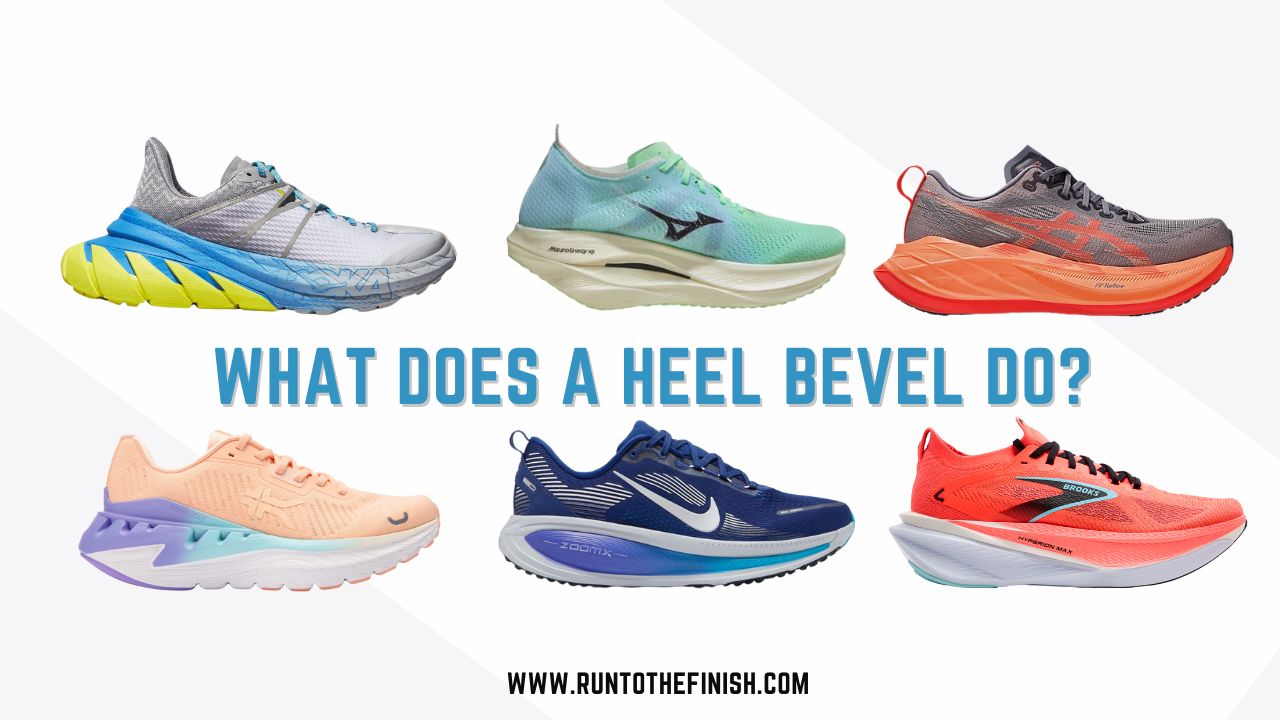
Line up a few of your running shoes and take a look. Notice how the back edge of the heel isn’t shaped the same in every pair? That’s not just a design choice, it’s functional.
That angled cut is what’s known as the heel bevel. And believe it or not, it can change the way your shoes feel underfoot, from how smooth the landing feels to how quickly you transition into your stride.
Brands like Hoka and Mizuno have really leaned into dramatic heel bevels in some past models. But do those bold designs help or hurt?
Let’s dig into a little more about what a heel bevel is and how paying attention to it could change the way you choose your next pair of running shoes.
What is a Heel Bevel?
The heel bevel is basically the curve, or sometimes the lack of one, at the very back of your shoe.
The heel bevel affects how your foot hits the ground, how smooth your stride feels, and even how much energy return there is.
Every time you move, whether walking or running, your foot is going to roll through a pattern: heel, midfoot (or ankle), forefoot. You can even try it right now as you’re reading this article, pretend you’re taking a step, and you’ll feel how your foot rolls those three points.
Of course, how each of us runs is a little different. For me, after years of dance, I tend to naturally run more up on my toes. And depending on the way a shoe’s heel bevel is angled, my muscles either get that extra bit of support or they end up working a lot harder than they need to.
Whereas, if you’re someone who is a heel striker, which is about 70% of runners, a more prominent heel bevel may not be ideal.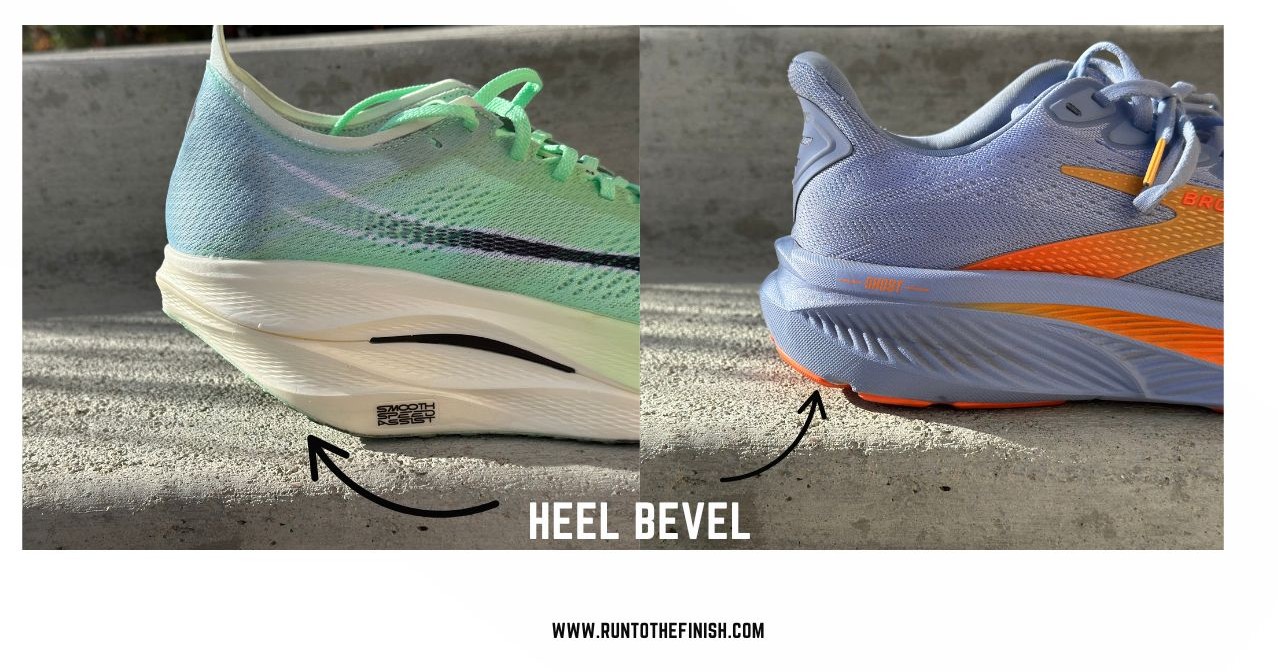 Unless you’re grabbing a pair of carbon-plated shoes, you might not have noticed just how dramatic a heel bevel can be.
Unless you’re grabbing a pair of carbon-plated shoes, you might not have noticed just how dramatic a heel bevel can be.
When I wasn’t testing gear all the time, most of the shoes I ran in had a pretty subtle bevel. It was there, but not enough to make me think twice about how my stride was changing.
That changed once I started trying out shoes like the Mizuno Rebellion Pro 3, Brooks Hyperion Max 3 and even Asics Superblast. It wasn’t just something in my stride; my lower leg muscles were quick to remind me just how much that heel bevel can come into play.
3 Types of Heel Bevels
Every pair of running shoes has some bevel, even Altra, which has a zero-drop design. The heel bevel shape may be subtle or dramatic, but it’s always there to guide how your foot lands and transitions through each stride.
Not sure what kind of bevel your shoes have? Here are a few examples of the different types of heel bevels:
👉Minimal (In Most Daily Trainers)
A minimal heel bevel is exactly what it sounds like, super small and sometimes such a slight angle that you barely notice it’s there.
You’re not going to feel a big change in your stride with this heel bevel design, which is why it’s so common in daily trainers.
It’s often the best option for beginners, since it keeps things simple and won’t dramatically change how you run.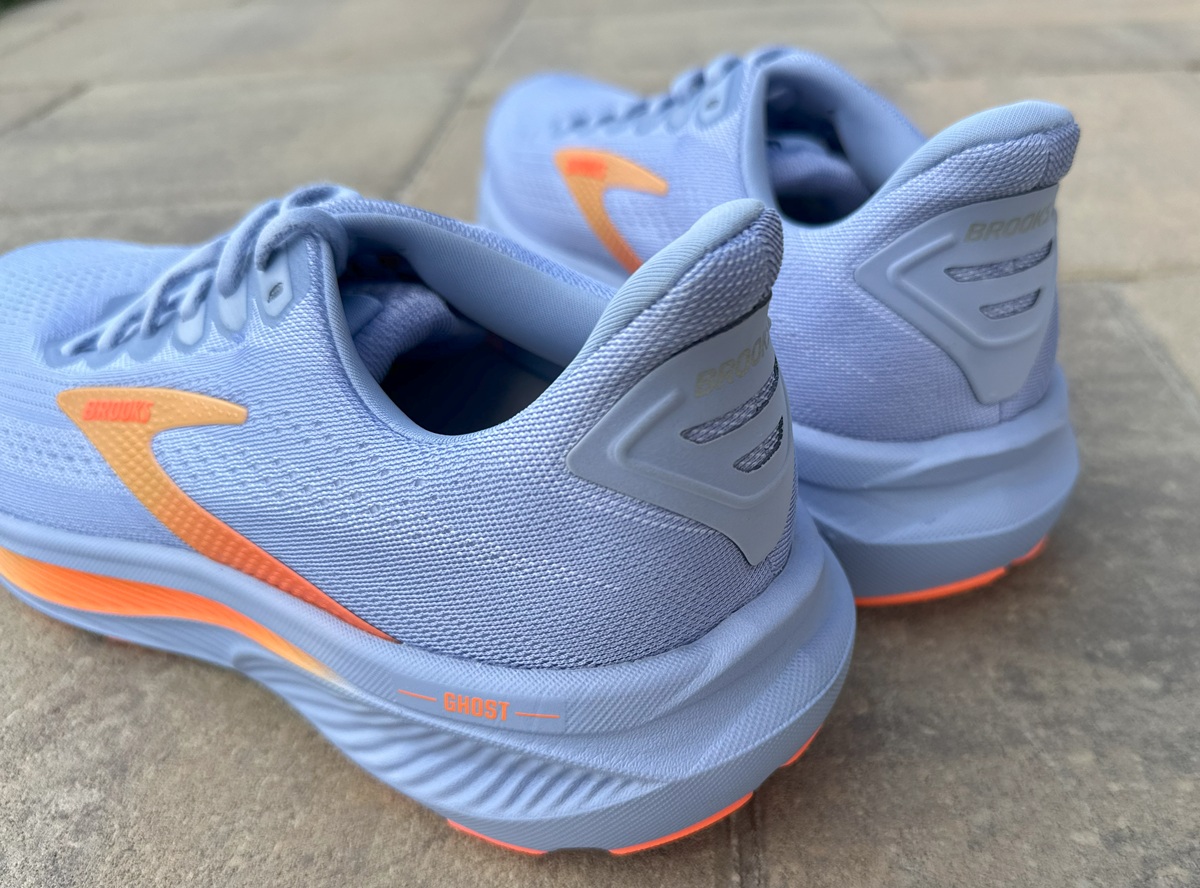
An example of a minimal heel bevel would be the Brooks Ghost 17. You can read our full review of the Brooks Ghost 17 here.
👉Rocker (Most Common in Race Day Shoes)
You’ll usually spot this type of heel bevel in carbon-plated shoes. Think of the shoes you pick to wear when you want to run faster and goal-paced efforts.
The rocker design helps propel you forward with a smooth rolling motion, making your stride feel more efficient.
It’s a big reason why rocker-style bevels are so common on the front of the pack runners. 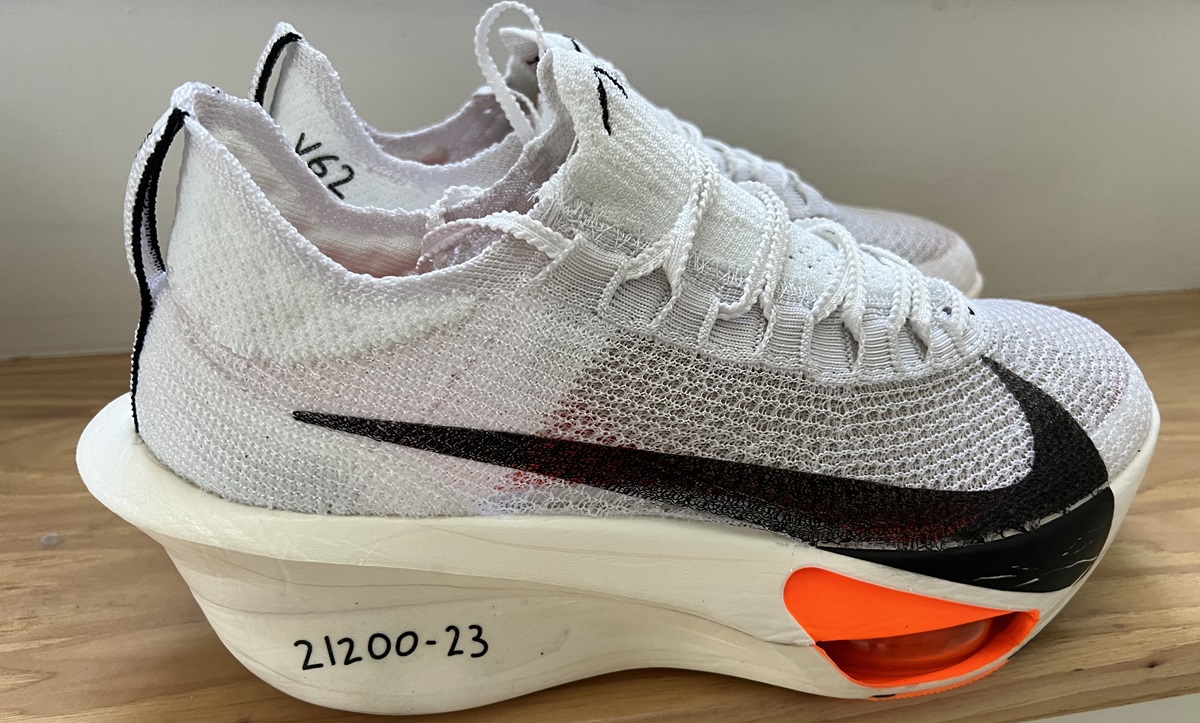
An example of a rocker heel bevel would be the Nike Alphafly. You can check out our full review of the Nike Alphafly 3 here.
👉Rounded
If you’re a heel or midfoot striker, a rounded heel bevel is worth paying attention to.
This shape creates a smoother transition from landing to toe-off, mimics the natural curve of your foot, and makes the shoe feel like it’s working with you instead of against you.
If you’re training for a longer distance, that extra help can keep things feeling good and delay your form from breaking down as you start to get tired.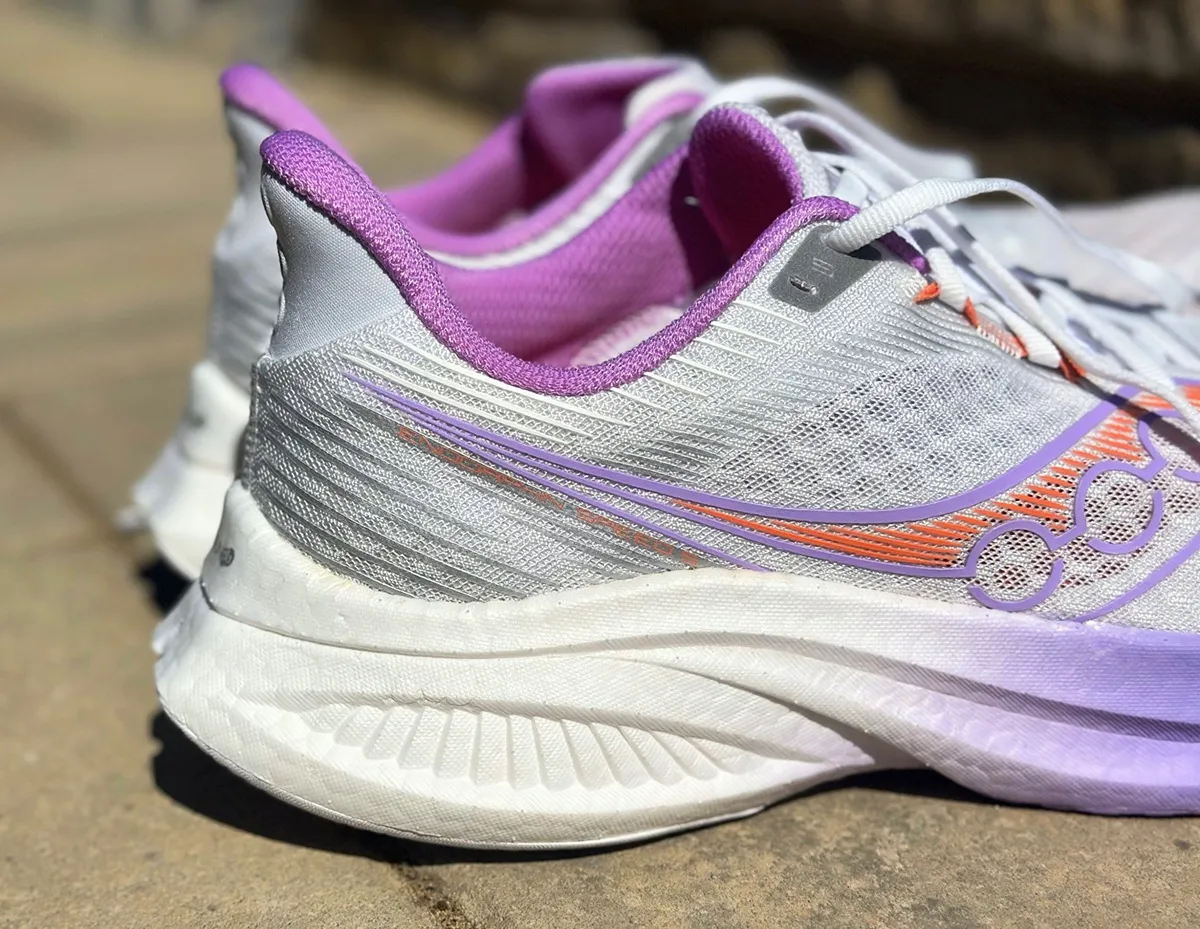
An example of a rounded heel bevel would be the Saucony Speed 5. You can check out our full review of the Saucony Speed 5 here.
Does the Design of a Heel Bevel Matter?
The shape of the heel on your running shoe absolutely matters. Even minor tweaks, like a few millimeters, can change the way your stride feels.
Research has shown that adjusting heel shape can reduce impact, improve stability, and even make shoes feel more comfortable on the run (Ryu et al., 2021).
Think back to when Hoka released the Tennine. Most of us looked at it and thought, what on earth is that thing? The oversize heel flare was extreme, and while it offered some benefit on steep downhills, it wasn’t so great anywhere else. For them it was really a playful test because often by going to extremes we learn something that then improves our more moderate designs.
By extending the sole too far behind the heel, the shoe made you strike the ground earlier than necessary. Instead of helping, that exaggerated design actually added risk for more runners.
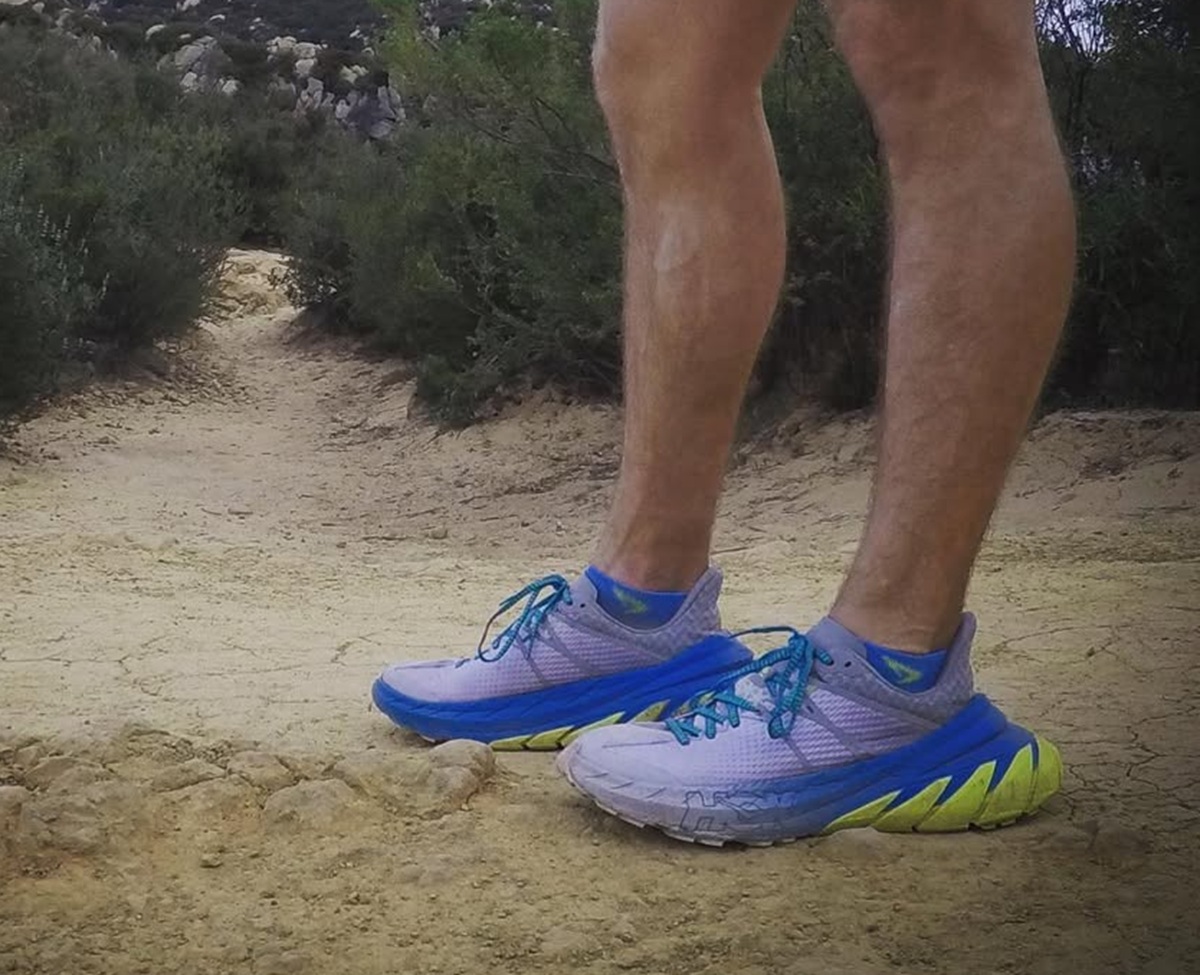
When your foot hits the ground, the impact travels up your leg, and the heel bevel plays a big role in how that impact is absorbed.
With no bevel, the shock comes all at once, like dropping a pile of books directly on the ground. But with a bevel, it’s spread out and feels less intense, like you’re gently placing a pile of books on the table.
The steeper the angle of the bevel, the quicker your foot rolls forward onto the ground. That can be helpful in some situations, but it means your muscles have to work harder, which is often when fatigue and overuse injuries pop up.
So, what’s the perfect heel bevel? Honestly, there isn’t a one-size-fits-all answer.
The “best” one depends on your running style and what you want out of the shoe (easy runs, speed workouts, long runs).
Some brands are still figuring it out (looking at you, Mizuno), but plenty of companies have started leaning into designs that actually make sense.
They’re showing us that heel shape isn’t just a design detail, it’s something that can make a shoe feel better for all kinds of miles.
What to read next?
- Is It Ok To Run in Carbon Plated Shoes Every Day?
- Are Max Cushioned Shoes Bad For Us?
- 7 Best Flat Feet Running Shoes
The post Understanding Heel Bevel: Why This Tiny Detail Changes Everything appeared first on RunToTheFinish.
from RunToTheFinish https://ift.tt/rAoUGgs
Post a Comment
Post a Comment